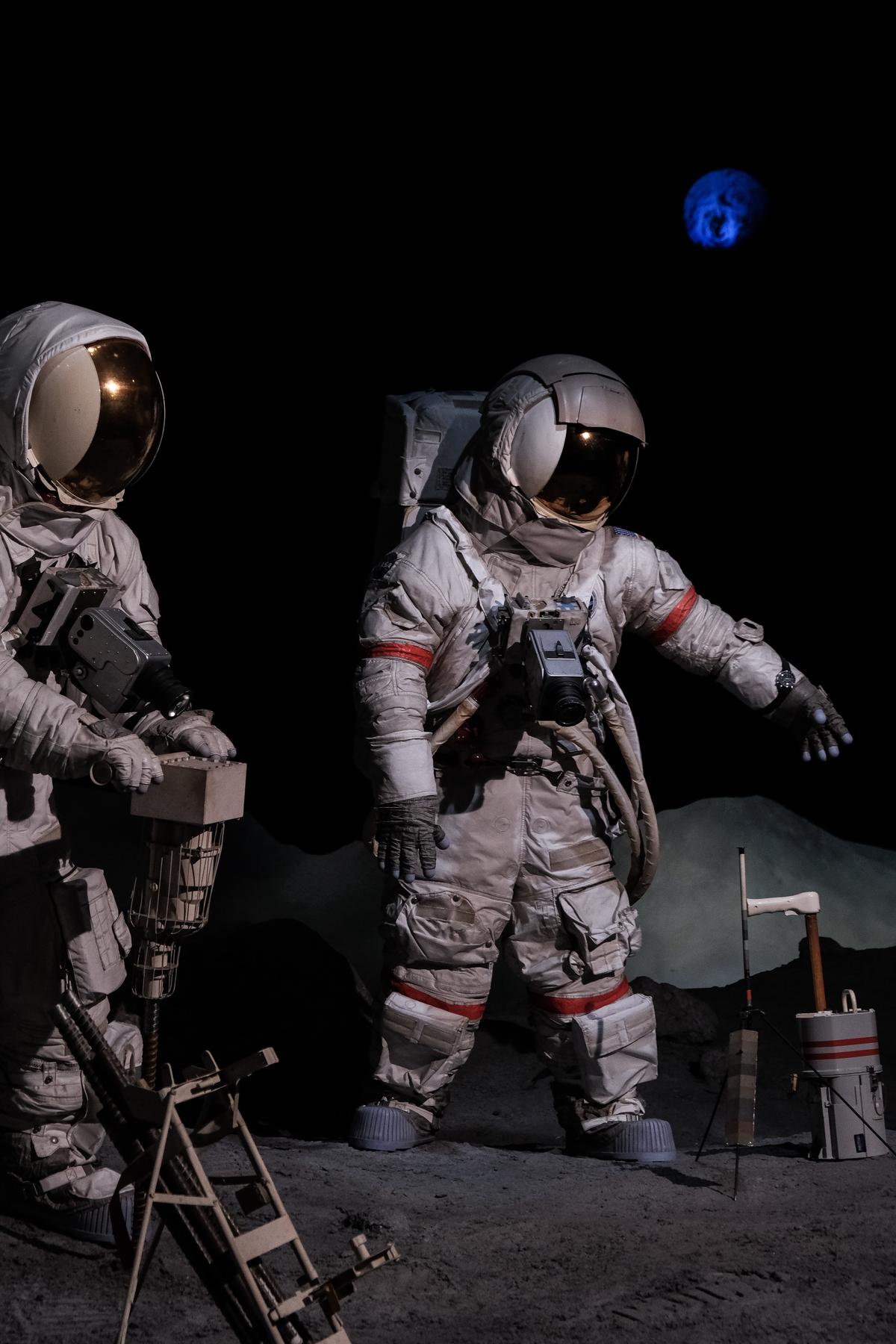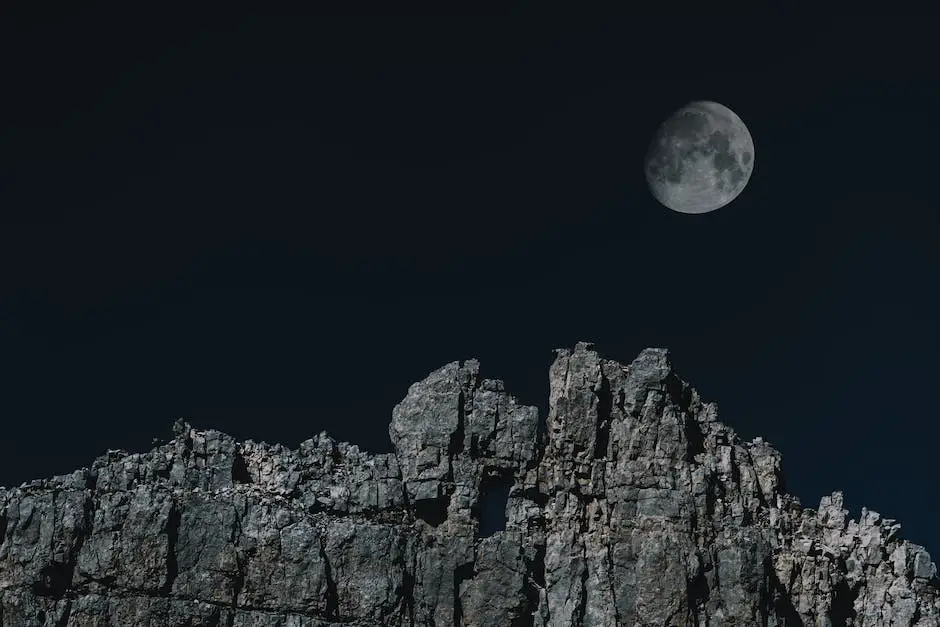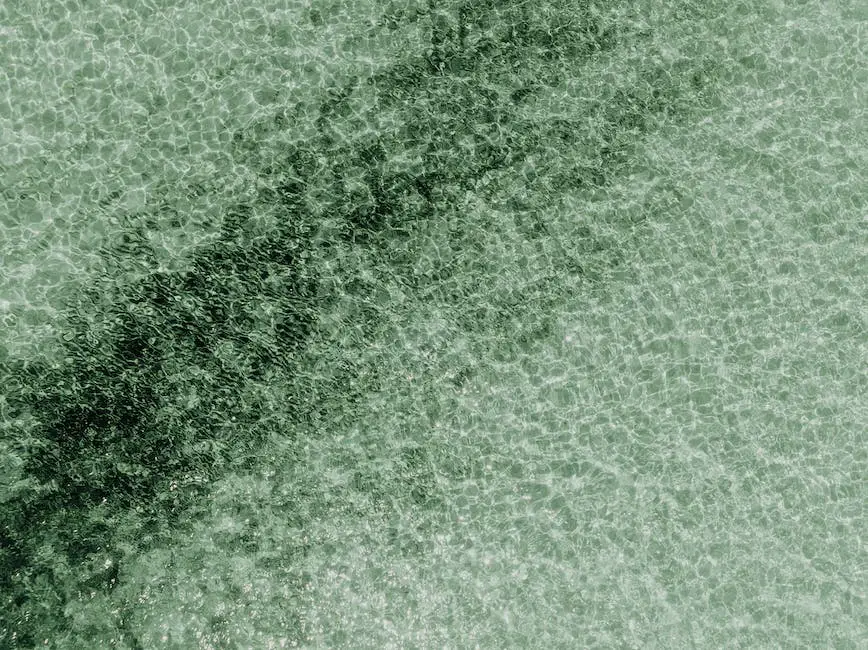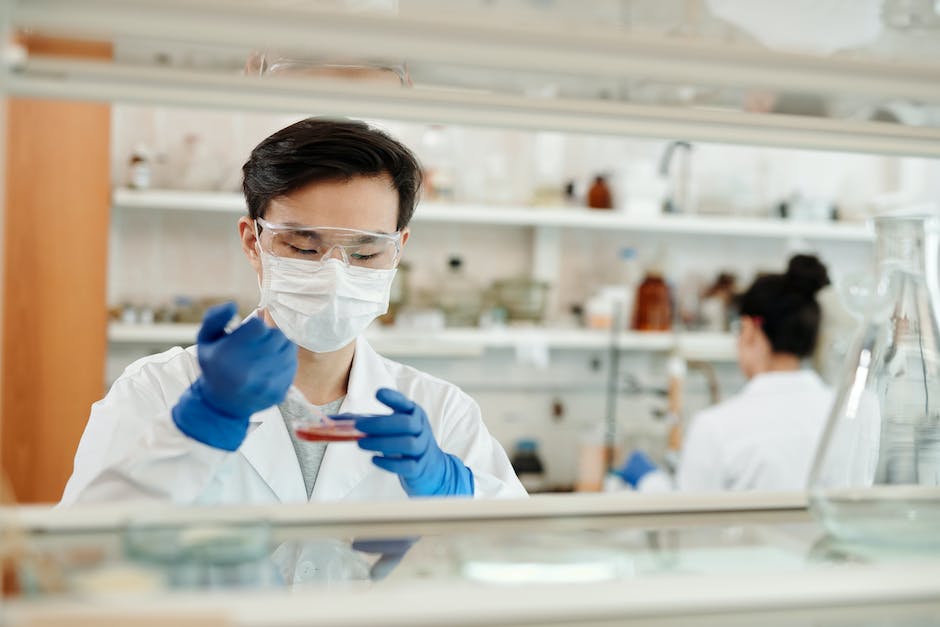With a breathtaking backdrop of star-studded galaxies, the Apollo missions heralded an exciting era of space exploration. The ambitious NASA-led program stood out as the pinnacle of human ingenuity, technological triumph, and an insatiable curiosity to unravel the mysteries of our celestial neighbour – the Moon.
From the meticulously engineered spacecraft and equipment to the groundbreaking scientific experiments carried out, the Apollo missions fundamentally reshaped our understanding of lunar and space science.
This essay presents a comprehensive account of the riveting journey of the Apollo missions, delving into the intriguing world of lunar rock studies, life science experiments, seismological investigations, and the enduring legacy of these missions.
Contents
- 1 Overview of Apollo Missions
- 2 Spacecraft and Equipment
- 3 Moon Rock Studies
- 4 Life Science Experiments
- 5 Vertical Seismometers Experiments
- 6 Enduring Impacts and Legacy
- 6.1 Lunar Study: A Leap Forward Via the Apollo Missions
- 6.2 Scientific Advancements in Lunar Geology during Apollo Missions
- 6.3 Influence on Lunar Atmosphere Studies
- 6.4 Inspirations for Future Lunar Missions
- 6.5 Contribution towards Space Technology Advancements
- 6.6 Apollo Missions: The Bedrock of Lunar and Space Science
Overview of Apollo Missions
Overview of Apollo Missions
The Apollo program was the United States’ flagship human spaceflight program by NASA in the 20th Century. The vision for the Apollo Missions was to achieve the goal, as proposed by President John F. Kennedy in 1961, of “landing a man on the Moon and returning him safely to the Earth.”
The Apollo program ran from 1961 – 1972 and included a range of missions with several significant milestones. The program ultimately achieved its goal by landing the first humans on the moon in 1969 during the Apollo 11 mission.
Scientific Objectives of Apollo Missions
Apart from the primary aim of landing a man on the moon and returning him safely to Earth, the Apollo missions were also tasked with multiple scientific objectives. These included extensive lunar surface studies, to understand the moon’s geology better and learn about its ‘origin story.’
The astronauts collected lunar surface samples, took photographs, and performed experiments on the moon during their lunar excursions. Through these activities, the Apollo astronauts performed scientific experimentation and observation that significantly improved our understanding of the moon.
Significant Milestones and Experiments
Seismic Experiments Apollo Missions Secrets
During the Apollo 11, 12, 14, 15, 16, and 17 missions, seismic experiments were conducted to measure moonquakes and the impact of meteorites on the lunar surface. These experiments provided invaluable data on the moon’s internal structure.
Lunar Geology Studies
The Apollo 14, 15, 16, and 17 missions were particularly focused on studying lunar geology. Apollo astronauts sampled rocks and soil for analysis back on Earth. This included the famous Genesis Rock, a piece of the moon’s original, primitive crust, about 4.5 billion years old, collected during Apollo 15.
Laser Ranging Experiments
Starting with the Apollo 11 mission and following Apollo 14 and 15, retroreflector arrays were placed on the lunar surface. These devices allow scientists on Earth to bounce a laser beam off them and measure the time it takes for the light to return. This experiment not only measures the distance between Earth and the moon with extraordinary precision but also tests Einstein’s theory of relativity.
Atmosphere and Lunar Surface Experiments
Apollo 17 carried an Atmospheric Explorer (AE) package to study the Moon’s extremely thin atmosphere. In addition, experiments examined the composition and behavior of lunar dust, which proved problematic for astronauts and equipment during the mission.
The Impact of Apollo Missions
Stepping stones to modern space exploration, the Apollo missions significantly advanced our understanding of space and lunar science. These missions provided the groundwork for ongoing endeavors like the Mars Rover, as well as future lunar expeditions and prospective missions to Mars. The long-term influence of the Apollo missions pervades both the arena of space exploration and society at large, sparking imaginations and fostering an ambition to strive beyond our limits to reach the stars.
Spacecraft and Equipment
Exploring the Functionality of Modules in Apollo Missions
The success of the Apollo missions was determined by the synergistic operation of two distinct yet interconnected spacecraft: the Command Module (CM) and the Lunar Module (LM). The CM, dubbed the Columbia, served as the main living quarters for the trio of astronauts during the bulk of the mission. This capsule-like structure incorporated essential systems such as life support, navigation control, and communication equipment, and was equipped with a heat shield for Earth re-entry.
In contrast, the Lunar Module, named the Eagle, was designed specifically for lunar landing and consisted of two parts: the descent and ascent stages. The descent stage, which contained the engine and landing equipment, stayed stationary on the moon’s surface once the astronauts took off using the ascent stage.
Scientific Equipment Board
Scientific equipment was quintessential for Apollo moon missions. The Apollo Lunar Surface Experiment Package (ALSEP) was a suite of scientific instruments placed by the Apollo astronauts at their landing sites.
ALSEP included seismicity probes to record moonquakes which provided insights into the Moon’s core and structure. A heat-flow experiment measured the temperature below the lunar surface, while the Laser Ranging Retroreflector, placed by Apollo 11, enabled high-precision tracking of the moon’s distance from Earth. There was also a lunar atmosphere detector to study the moon’s almost nonexistent atmosphere.
Lunar Roving Vehicles
The Lunar Roving Vehicle, popularly known as the Moon Buggy, was used in the last three Apollo missions 15,16 and 17 to increase the range of astronauts’ moon explorations. Being an electric vehicle, it incorporated advanced technologies, including a strong, lightweight mesh wire wheel design adaptable to the lunar terrain.
This vehicle was indispensable for the extensive geological surveys that astronauts conducted, allowing them to collect a diverse range of lunar rock and soil samples quickly and efficiently.
Lunar Sample Collection
Astronauts used an array of tools specially designed for lunar samples collection. The Adjustable Sampling Scoop, resembling a small shovel, allowed them to pick up samples. The Lunar Geological Hand Tools also included rock hammers and tongs. Special containers, known as Lunar Sample Return Containers, stored samples safeguarding them from contamination.
Expanding Horizons: The Legacy of Apollo’s Technological Innovations
The Apollo missions delivered a potent impact on the landscape of several scientific fields, providing valuable lessons that have since been leveraged for lengthy spatial journeys, such as the extended excursions aboard the International Space Station and future ventures to Mars. Each monumental leap in the Apollo mission series yielded a quantum of knowledge, resulting in a profound apprehension of the Moon and the Universe that was previously ungrasped.
Interestingly, the influence of Apollo’s technological contributions can also be discerned in common household conveniences like cordless devices, insulation material, and even digital imaging techniques. These everyday utilities, though seemingly disconnected from space exploration, stand as testaments to Apollo’s indelible mark on technological progression here on Earth.

Moon Rock Studies
Unearthing Secrets: The Impetus behind Moon Rock Studies
The collection of moon rock samples marked an exciting chapter of scientific exploration during the Apollo missions. The principal objective of these lunar studies was to illuminate the mysterious geological past of the Moon.
Scientists hoped to validate hypotheses about the Moon’s genesis, its complex relationship with Earth, and the processes that had shaped it.
On Earth, persistent geological phenomena such as tectonic movements and weathering continually reshape the land, blurring the historical trail of the planet’s genesis. However, the Moon, untouched by these processes, offers a ‘cosmic vault’ of unbiased, unaltered material. The study of moon rocks, thus, could furnish scientists with a rare glimpse into the infancy of the solar system.
Nevertheless, the monumental task of harvesting these lunar treasures demanded meticulous strategizing, technical finesse, and the spirit of innovation synonymous with the Apollo missions.
Moon Rock Collection Techniques
The moon rock collection during the Apollo missions was meticulously planned and executed. Astronauts were trained in geology techniques, and the equipment was specially designed for the task. The tools varied across missions, but they essentially included rock hammers, scoops, rakes, and tongs.
The astronauts underwent intensive training for identifying, selecting, and collecting lunar samples. They were taught not only the scientific aspects but also the practical skills necessary for operating in a zero-gravity environment while wearing a bulky pressure suit.
Astronauts collected samples from both the lunar surface and beneath it using drills. These samples included loose fragments, core samples, and lunar dust, collectively known as regolith. All the collected specimens were put into sample bags and carefully carried back to Earth in the Apollo command module within a rock box specially designed to protect them from contamination.
Study of Moon Rocks
Upon their return to Earth, the moon rocks were studied extensively in labs. The samples were kept under strict quarantine conditions initially to prevent potential ‘moon germs’ from contaminating Earth. After the scientists were certain that the samples were biologically safe, they were distributed to labs worldwide for further examination.
Using a range of scientific techniques, such as radiometric dating, mass spectroscopy, and electron microprobe analyses, scientists began decoding the secrets of the lunar rocks. They studied their mineral composition, isotopic ratios, and structural makeup, garnering insights into the Moon’s geological processes, age, and volcanic activity.
The Secrets of Moon Rocks
Harvested during the iconic Apollo missions, moon rocks have offered unparalleled scientific revelations. These ancient samples have effectively authenticated the Moon’s age as approximately 4.6 billion years old.
Its oldest unearthed rock, fittingly termed the ‘Genesis Rock,’ was found during the Apollo 15 mission, estimated to originate from approximately 4.1 billion years ago, thereby shedding light on the age and evolution of our solar system.
Beyond this, the studies also suggest a tumultuous inception for the Moon. The distinct resemblance between fragments of the Earth’s mantle and moon rocks fortified the ‘Giant Impact Hypothesis’.
This hypothesis stipulates that the Moon was birthed from a colossal collision between a mars-sized body and Earth around 4.5 billion years ago. This violent encounter produced a significant amount of debris that eventually amalgamated to create the Moon.
Fascinatingly, these investigations also pointed towards the Moon having a volcanic past. The unearthing of microscopic orange glass beads during the Apollo 17 mission brought to light the fact that the Moon once possessed a magnetic field. This significant discovery further unraveled stories of the Moon’s liquid interior.
In a nutshell, the lunar rock samples gathered during the Apollo missions have been monumentally beneficial in extending our comprehension of the Earth-Moon system and the larger expanse of the universe.

Life Science Experiments
Biology in Space: Life Science Experiments during the Apollo Missions
A notable fraction of the landmark Apollo missions was dedicated to carrying out life science experiments with a primary focus on understanding the effects of space travel on the human body.
These pioneering investigations laid the foundation for our current understanding of space medicine and helped address serious health considerations linked to space exploration.
Understanding Space and its Effect on Life
Throughout the Apollo missions, several life science experiments were carried out. These focused on understanding the biological changes astronauts undergo during extended periods in space.
One of the early experiments conducted involved observing the lifecycle of ricefish onboard Apollo 7. This experiment provided first-hand insights into how the lack of gravity affects animal reproduction and development.
Biomedical Demonstrations
The Apollo Biomedical Demonstrations were a series of experiments that studied the physiological responses of astronauts during space flight. Among these were the Inflight Exercise and Lower Body Negative Pressure experiments conducted during Apollo 14 and Apollo 15 missions.
The former focused on maintaining cardiovascular health and physical fitness while in a weightless environment; the latter aimed at reducing the orthostatic intolerance (difficulty standing upright) experienced by astronauts after returning to Earth.
Lunar Dust Effects
One of Apollo missions’ primary concerns was lunar dust, and its possible effects on astronaut health. During Apollo 16, an experiment was conducted in which microscopic inspection of lung tissue from mice exposed to lunar dust was practiced to determine any adverse health effects. The study later went on to inform NASA on safety provisions for astronauts and set the foundation for continued research on foreign planetary dust.
Bio-Core
Apollo 13, despite its unfortunate incident, was set to carry out a Bio-Core experiment. It would involve taking core samples from different layers of the astronaut’s biological elements, including blood and urine, frozen and preserved to be analyzed on Earth. The samples would provide scientists with an understanding of how the human body adapts and reacts to a prolonged space environment.
Influence on Modern Space Travel
The pioneering experiments conducted during the Apollo missions paved the way for modern practices in space medicine and set a precedent for the kind of considerations required for human space travel.
Today’s support systems and protocols in space missions heavily rely on the valuable knowledge gained from the Apollo-era experiments. For example, the emphasis on physical fitness and cardiovascular health in today’s astronaut training programs can be traced back to the Apollo life science experiments.
Setting the Stage for Future Space Travel
Scientific endeavors, particularly life science experiments, undertaken during the ambtious Apollo missions, helped pave the way for the future of human space exploration. These critical investigations addressed the physiological impacts of space travel, surveyed potential health threats, and helped establish vital safety measures. As a result, they made substantial contributions to the current field of space medicine.

Vertical Seismometers Experiments
Groundbreaking Use of Vertical Seismometers in Apollo Missions
Among the array of scientific studies conducted during the Apollo missions, the deployment of seismographic experiments, particularly the use of vertical seismometers, stands out. These investigations provided an unprecedented understanding of the lunar surface and the moon’s inner structure, consequently revolutionizing lunar seismology.
Setting Up Seismometers on the Lunar Surface
The Apollo missions, Apollo 11 onwards, were designed not just to land men on the moon, but also to leave behind seismic equipment to monitor seismic activity, or “moonquakes”.
Each mission carried a Passive Seismic Experiment Package, or PSEP, that included vertical seismometers. Astronauts placed these instruments on the lunar surface and left them operating after their departure.
The seismometers were technically intricate. Upon landing, the astronauts would manually deploy the seismometers to the lunar surface, placing them at a sufficient distance from the Lunar Module to reduce the impact of mechanical and electrical interference.
The astronauts would then level and align the seismometer’s sensor axis perpendicular to the moon’s gravitational pull before turning it on, primed to record any lunar seismicity.
Data Collection and Understanding Moonquakes
The deployed seismometers aimed to monitor and measure seismic vibrations or “moonquakes” on the lunar surface. They were not dissimilar to the earthquake-studying devices on Earth.
These instruments detected seismic waves traveling throughout the moon’s interior, generated either by lunar tectonic activity, meteorite impacts, or the notable tidal stresses caused by the gravitational interaction with Earth.
Data relayed from the seismometers consisted of squiggly lines, exactly as you might see on a seismograph following an earthquake on Earth. The squiggles represented the intensity and duration of the moonquakes.
Insights into Lunar Interior
Raw seismic data collected from the lunar surface were used to develop a model for the moon’s interior structure, enhancing our understanding of the moon and possibly even Earth’s early days. The seismometer experiments conducted on the Apollo missions gave us extremely valuable insights into both lunar tectonic activity and the moon’s structure.
Summarily, the implementation of the Vertical Seismometers Experiments during the Apollo missions was a crucial step in advancing our understanding of the moon.
These tools were utilized to observe and record the moon’s seismic activity which provided valuable insights into its structure and geological history.
Beyond that, these tested and proven methodologies from the Apollo missions have since been utilized for further space explorations, establishing a foundation for future investigative studies of our moon and potential other celestial bodies.

Enduring Impacts and Legacy
Lunar Study: A Leap Forward Via the Apollo Missions
The Apollo missions marked a significant turning point in the exploration of space, providing a wealth of knowledge and sources for future studies.
A multitude of scientific experiments were carried out, including surface sample collection and archaeological data analysis, which served to expand and refine space science. This wealth of collected data has completely transformed our understanding of the moon, stimulating additional research and laying a path for future space missions.
Scientific Advancements in Lunar Geology during Apollo Missions
At the core of the Apollo moon missions was a profound commitment to science. The most significant contribution came from geological studies.
The Apollo astronauts collected about 842 lbs (382 kilograms) of rocks and soil from the lunar surface, which provided the researchers with valuable information about the moon’s composition, formation, and geologic evolution.
These samples were studied and re-studied for decades, reshaping our understanding of not only the moon but also our planet and the broader solar system.
Influence on Lunar Atmosphere Studies
The lunar atmosphere studies conducted during the Apollo missions contributed in many ways to our current understanding of space science.
For instance, the discovery that the lunar exosphere consists of gases such as helium and argon shed light on the moon’s thin, fragile atmosphere. Moreover, the studies showed researchers the interactions between the lunar surface and the solar winds, which increased our understanding of how the solar system works as a whole.
Inspirations for Future Lunar Missions
The scientific achievements of the Apollo missions also played a vital role in inspiring future lunar missions. The Artemis program, NASA’s current plan to land humans back on the moon by 2024, is directly influenced by the scientific findings and technological advancements made during the Apollo missions. Additionally, discoveries from the Apollo missions have helped shape the attributes of unmanned lunar probes sent by other nations.
Contribution towards Space Technology Advancements
The Apollo Program helped advance many aspects of space technology, some of which are still used today in space exploration.
The hatch design of the Apollo spacecraft, the development of lightweight and portable scientific instruments, and improvements in mission protocols are among the advancements that have influenced the design and operation of today’s spacecraft.
These technological strides have paved the way for more effective and efficient space explorations.
Apollo Missions: The Bedrock of Lunar and Space Science
In summary, the scientific experiments conducted during the Apollo missions have largely shaped our present-day comprehension of lunar and space science. It is evident that the experiments’ footprint on lunar geology, lunar atmosphere studies, and space technology advancements immensely influences our ongoing and future space explorations.
The Apollo missions’ legacy still resounds in the study of the moon, the planning of upcoming lunar missions, and the burgeoning field of space science. We owe a significant part of our progress in understanding the mysteries of the universe to the Apollo missions. Their enduring impacts and legacy are a testament to the importance of exploration and scientific experimentation.

As we delve into the fascinating narrative of Apollo missions, it’s clear that the influence of these momentous explorations extends beyond mere lunar studies.
The invaluable insights gleaned from lunar rocks, the novel understanding of how space travel influences human health, and the deeper comprehension of lunar seismology have forever transformed our perspective of the universe.
Not merely a page in history, the Apollo missions stand as a testament to human ambition and innovation, continually inspiring new generations to gaze at the stars with wonder and ambition. Each discovery, each experiment, each brave leap towards the unknown, has paved the way for the future, cultivating an enduring legacy that continues to shape space exploration and scientific curiosity.

With a passion for unraveling the mysteries of the moon, Dr. Luna Sterling is a highly-respected astrophysicist, a dedicated lunar enthusiast, and a captivating blogger. After earning her Ph.D. in Astrophysics from the Massachusetts Institute of Technology (MIT), she served as a lead scientist and mission planner for NASA, contributing significantly to various lunar missions.
For over two decades, Luna has been at the forefront of lunar science, pushing boundaries and pioneering discoveries that have enriched our understanding of the moon’s geological history. However, it’s her infectious enthusiasm for all things lunar that truly sets her apart.
In an endeavor to bring the moon closer to everyone, Luna started her blog, “Luna’s Lens: A Closer Look at the Moon.” With this platform, she offers a unique blend of intriguing moon facts, updates on lunar missions, and personal anecdotes from her experiences in the field, all told in an engaging and accessible manner.
Luna’s unique blend of scientific expertise and warm, humorous writing style has transformed complex astrophysics into compelling narratives that captivate her audience. As a gifted communicator, she leverages her knowledge and experience to relate scientific facts to everyday life, thus making her blog a must-read for both seasoned space enthusiasts and curious newcomers.
Interactive and inviting, Luna frequently encourages reader engagement through thought-provoking discussions and a monthly ‘Ask Dr. Luna’ feature, where she personally answers questions about the moon and space exploration. A celestial storyteller at heart, Dr. Luna Sterling’s passion for the moon is as vast as the cosmos she explores, making her an invaluable beacon in the world of lunar science.